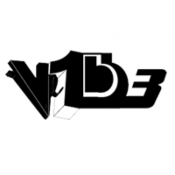Response to Expose, Intervene, Occupy
project Home
A collaboration of ten artists, presented Annette Barbier, Columbia College
University Film and Video Association, August 2012
By
Stephanie Tripp, Ph.D.
Assistant Professor of Communication, the University of Tampa
Expose, Intervene, Occupy is a series of virtual installations throughout Chicago’s Loop area that inscribes critical commentary and images within the city’s public spaces. The project’s ten artists employ augmented reality technologies, such as the Layar mobile application, to attach text, images, and video to specific physical locations using a mobile device’s GPS and camera view technologies. As many others practicing within the emerging movement of augumented reality (AR) art, these artists are experimenting with new forms of public art that are simulataneously ephemeral and monumental.
As the title suggests, Expose, Intervene, Occupy explores what it means to inhabit public spaces in a landscape in which mass demonstrations can be coordinated, documented, and amplified via social media, yet at a time when the definition of public space in American cities is in flux. As images of the the physical bodies occupying streets and parks are projected almost instantaneously across a virtual network, the ground under the protestors’ feet seems to take on a virtual existence of its own, one that flickers between public commons and private property. The artists collaborating on Expose, Intervene, Occupy attempt to navigate this troubling urban topography in new ways, counting on Chicago’s familiar landmarks, streets, and signposts to open up hidden perspectives on how the city operates.
The eight AR collaborations comprising Expose, Intervene, Occupy vary in their approaches from direct to fanciful, from abstract to overtly political. They hold in common, however, the aim of producing public art that challenges our expectations. In the words of collaborating artist Annette Barbier, the intention is “not so much to inform, but to interrupt, prick curiosity, to offer another possibility for a familiar space.”
The works together present a sense of mirthful commentary rather than heavy-handed critique. Consider Annette Barbier’s 2070 series in which the Asian Carp, an invasive species of fish threatening the ecosystems of the Great Lakes, is portrayed as a constant in mid-twenty-first-century Chicago life, frolicking in the city’s fountains and splayed out on its dinner tables. Viewing the virtual installations leaves an impression that is less future shock and more unsettled amusement.
Barbier’s other series in the project, New Heroes, adds virtual street signs to well-traveled intersections to suggest an alternative history of the city. Alongside signs that have long celebrated leaders of the city’s European heritage, notably U.S. presidents, stand virtual counterparts named for distinguished Native Americans. A Game We Play, created by Mat Rappaport, offers a playful critique of twenty-first century finance in a Mario Bros.-inspired trip through the city’s financial district using virtual coins as rewards, while Occupy by Conrad Gleber and Gail Rubini uses virtual Post-It notes to make more direct comments on the recent financial crisis. PolyCopRiotNode by Adam Trowbridge and Jessica Westbrook introduces a virtual cybercop whose menacing presence along Wacker Drive provokes questions about the role of police officers in public spaces. WeathervaneAR by John Marshall and Cezanne Charles creates several instances of a virtual “robotically driven” headless chicken to call attention to the apocalyptic paranoia, or “apocanoia,” driven by the Internet. Street View by Drew Browning attaches AR content to signs and images near Chicago Transit Authority bus stops along State Street to draw attention to the forgotten struggles by disabled citizens to gain access to public transportation. Finally, Pylons on Parade by Celine Browning produces virtual transformations of a mainstay of urban streets—the traffic cone—to invite reflection on the overlooked aspects of urban spaces.
